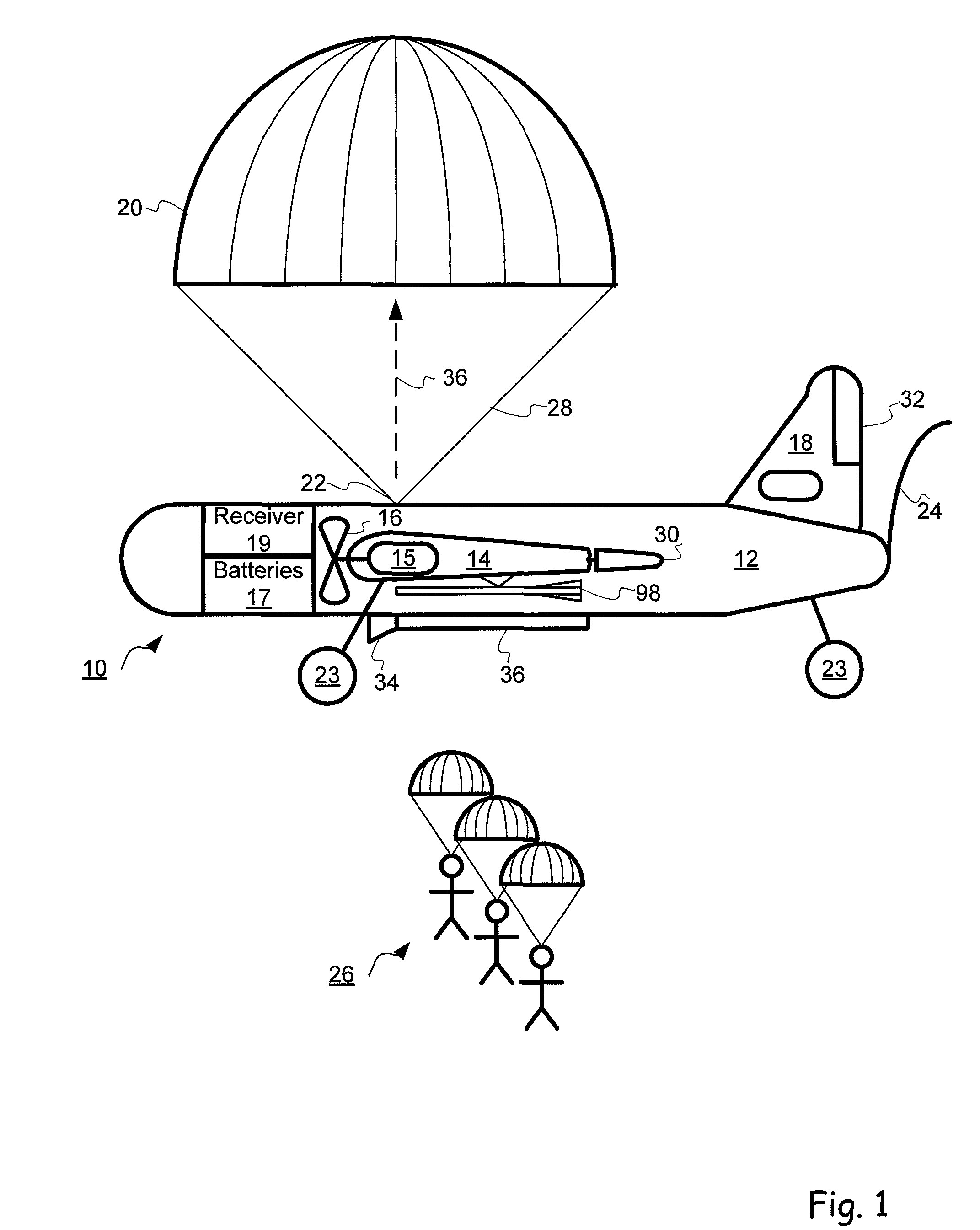Remote control aircraft with parachutes
a technology of remote control aircraft and parachutes, which is applied in the field of remote control aircraft, can solve the problems that the conventional remote control aircraft are limited in their ability to provide functions in addition to flying
- Summary
- Abstract
- Description
- Claims
- Application Information
AI Technical Summary
Benefits of technology
Problems solved by technology
Method used
Image
Examples
Embodiment Construction
)
[0013]Referring now to FIG. 1, twin engine remote control aircraft 10 is shown in side view including fuselage 12, wing 14, engine driven propeller 16 and tail and rudder assembly 18. Main parachute 20 is shown deployed from the upper portion of fuselage 12. Point of attachment 22 at which chute 20 is secured to fuselage 12 determines the attitude of aircraft 10 as it descends back to earth under chute 20. The engines of a remote control aircraft are typically relatively much heavier than remaining portions of the aircraft. Point of attachment 22 between chute 20 and fuselage 12 may be substantially forward along fuselage 12 in order to be positioned above the center of gravity or the center of vertical rotation of aircraft 10. This permits aircraft 10 to land right side up on landing gear 23 even when landing with chute 20 deployed in order to avoid unnecessary damage. Propellers 16 may be driven by electrical motors 15, powered by batteries 17. The location of batteries 17 may be...
PUM
 Login to View More
Login to View More Abstract
Description
Claims
Application Information
 Login to View More
Login to View More - R&D
- Intellectual Property
- Life Sciences
- Materials
- Tech Scout
- Unparalleled Data Quality
- Higher Quality Content
- 60% Fewer Hallucinations
Browse by: Latest US Patents, China's latest patents, Technical Efficacy Thesaurus, Application Domain, Technology Topic, Popular Technical Reports.
© 2025 PatSnap. All rights reserved.Legal|Privacy policy|Modern Slavery Act Transparency Statement|Sitemap|About US| Contact US: help@patsnap.com



